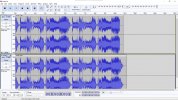bullshoy55
Member
- Joined
- Dec 18, 2023
- Messages
- 10
- Likes
- 0
Does anyone have any clue how to record the system audio on Windows computers WITH the enhancements enabled such as the Dolby Atmos equalizer or DTS-X headphone profiles...? I can't find anything even close to this topic being discussed on the Internet.

